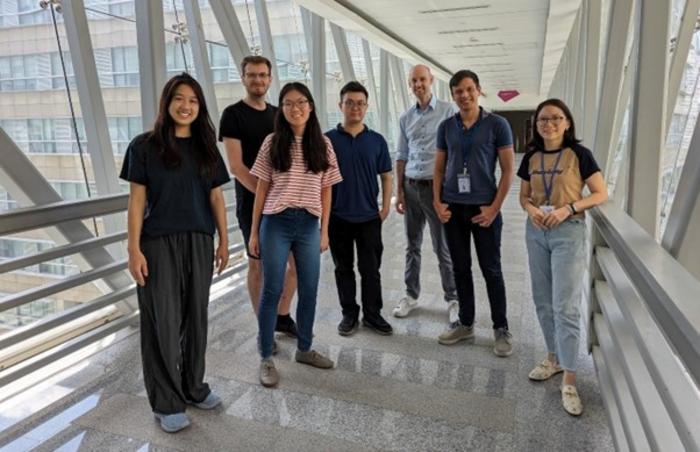
In a landmark advancement poised to transform the landscape of genomic medicine, a consortium of researchers led by the Agency for Science, Technology and Research (A*STAR) Genome Institute of Singapore (GIS) has unveiled SG-NEx, one of the world’s most expansive and meticulously benchmarked long-read RNA sequencing datasets. This groundbreaking resource, published in the prestigious journal Nature Methods in March 2025, encapsulates over 750 million long RNA reads amassed from 14 distinct human cell lines. By harnessing the capabilities of Nanopore sequencing technology, SG-NEx transcends the limitations of traditional short-read RNA sequencing, offering an unparalleled window into the structural and functional complexity of RNA molecules that govern cellular biology and disease pathology.
Traditional RNA sequencing methodologies have long served as the backbone of transcriptomic research, yet their inherent reliance on short-read sequencing techniques poses significant challenges. These conventional approaches fragment RNA molecules into thousands of short segments that must be computationally reassembled, akin to piecing together a shredded manuscript without any contextual guidance. This fragmentation limits the ability to accurately profile full-length transcripts and detect intricate RNA features such as alternative splicing events, fusion transcripts implicated in oncogenesis, and subtle chemical modifications critical to gene regulation. Such limitations hinder the discovery of precise biomarkers and obscure understanding of disease mechanisms that depend on nuanced RNA isoform dynamics.
Addressing these challenges, SG-NEx employs advanced long-read RNA sequencing that captures entire RNA molecules in single continuous reads. Nanopore sequencing technology underpins this approach by threading RNA strands through nanoscale pores, measuring fluctuations in electrical current to identify nucleotide sequences in real time. This enables researchers to directly observe complex transcript isoforms and fusion events without the guesswork of computational reconstruction. The richness of the resulting dataset empowers detailed exploration of RNA diversity across multiple human cell types, laying a robust foundation for future studies into gene regulation, cellular heterogeneity, and disease-associated transcriptomic alterations.
The sheer magnitude of the SG-NEx dataset—spanning approximately 39 terabytes—combined with its open-access availability through the Amazon Web Services (AWS) Open Data Registry exemplifies a deliberate commitment to democratizing cutting-edge genomic data. By providing a publicly accessible benchmarked resource, the SG-NEx project removes barriers to entry for scientists worldwide, enabling unparalleled collaboration across academia, industry, and clinical research sectors. This open data model catalyzes innovation by facilitating the development and rigorous evaluation of computational pipelines, machine learning models, and analytical frameworks aimed at extracting clinically relevant insights from complex RNA sequencing data.
Beyond dataset generation, the SG-NEx initiative actively benchmarks diverse long-read sequencing protocols against established short-read methods. This comparative rigor illuminates the unique strengths and contextual applicability of different sequencing modalities, guiding researchers in technology selection tailored to specific research questions. Benchmarking also exposes current technological limitations and informs iterative improvements in sequencing chemistry, library preparation, and computational analysis, thereby accelerating maturation of the field. Such comprehensive analytics elevate SG-NEx beyond a mere dataset to a dynamic resource that shapes future experimental designs and clinical assay development.
Clinical utility stands as a central motif guiding the SG-NEx endeavor. The enhanced resolution afforded by long-read datasets enables discovery of novel RNA biomarkers associated with complex neurodegenerative disorders, cardiovascular diseases, infectious pathogens, and heterogeneous cancers. The capacity to detect previously elusive fusion transcripts and isoform variants paves the way for refined diagnostic assays, personalized therapeutic targeting, and improved prognostic stratification. As the paradigm of precision medicine continues its rapid ascent, SG-NEx represents a critical tool empowering translational researchers and biotechnology firms in their quest to develop RNA-based diagnostics and therapeutics that are both sensitive and robust.
A significant aspect of SG-NEx’s impact lies in the collaborative synergy cultivated among an international network of experts spanning institutions including Duke-NUS Medical School, the National Cancer Centre Singapore, the Walter and Eliza Hall Institute, and others. This interdisciplinary effort integrates cutting-edge genomics, bioinformatics, and clinical expertise to ensure that the dataset not only meets technical excellence criteria but also aligns with pressing biomedical questions. Through shared knowledge and resources, the consortium exemplifies how large-scale consortia can surmount logistical, technological, and analytical complexities to produce globally relevant scientific assets.
Looking ahead, the SG-NEx team is poised to further extend the dataset’s utility by integrating artificial intelligence-driven analytics capable of automated detection and annotation of nuanced RNA features. These AI-powered tools aim to enhance throughput and analytical precision, enabling real-time discovery of transcriptomic signatures with minimal manual intervention. Additionally, efforts are underway to develop standardized protocols for long-read RNA sequencing that promote reproducibility and facilitate clinical adoption. Such standardization is indispensable to translating genomic innovations from bench to bedside and fostering regulatory approval pipelines.
The dataset’s transparency, scalability, and community-driven ethos place SG-NEx at the vanguard of a transformative shift in genomics. By enabling an unprecedented resolution of the transcriptome, the project unlocks new biological hypotheses, accelerates biomarker discovery pipelines, and offers promising avenues to decode the molecular underpinnings of human health and disease. As highlighted by Dr. Chen Ying of A*STAR GIS, the ability to read RNA in full “chapters” rather than “fragments” equips researchers with a clearer narrative of the molecular conversations within cells, which, she notes, is essential for uncovering hidden disease mechanisms and crafting more personalized interventions.
The open-access framework also positions SG-NEx as a didactic platform nurturing the next generation of scientists and bioinformaticians. By providing a rich, high-quality dataset with comprehensive documentation and benchmarking metrics, it serves as an invaluable resource for training computational models, validating novel algorithms, and benchmarking laboratory protocols. Such educational utility fosters scientific rigor and reproducibility, ensuring the longevity and evolving relevance of the resource.
In summary, SG-NEx embodies a landmark integration of high-throughput Nanopore long-read RNA sequencing technology, rigorous benchmarking, and open science principles. This integrated paradigm propels transcriptomic research into a new era, where full-length RNA molecules are accessible with unprecedented clarity, and the complexities of the human transcriptome can be systematically decoded at scale. The dataset’s release marks a pivotal step toward enabling precision medicine initiatives worldwide to harness RNA biology with greater resolution, ultimately advancing diagnostics, prognostics, and therapeutics for a broad spectrum of diseases.
The dataset and its associated tools are freely accessible via the AWS Open Data Registry, inviting the global scientific community to leverage this resource in their pursuit of breakthroughs at the intersection of genomics, molecular medicine, and computational biology. The SG-NEx initiative heralds a future where collaborative, data-driven science accelerates our understanding of RNA’s myriad roles in health and disease, unlocking new frontiers in biomedicine and improving patient outcomes worldwide.
Subject of Research: RNA sequencing, Nanopore long-read sequencing, transcriptomics, biomarker discovery.
Article Title: A systematic benchmark of Nanopore long-read RNA sequencing for transcript-level analysis in human cell lines.
News Publication Date: 13-Mar-2025.
Web References: http://dx.doi.org/10.1038/s41592-025-02623-4
Image Credits: A*STAR.
Keywords: RNA sequencing, Infectious diseases, Clinical research, Discovery research, Open access, Biomarkers, Cancer treatments, Nanopore sequencing.
Tags: A*STAR Genome Institutealternative splicing detectiondisease pathology researchgenomic medicine advancementslong-read RNA sequencingNanopore sequencing technologyoncology and RNA fusion transcriptsRNA chemical modificationsRNA molecule complexitySG-NEx dataset releaseSingapore scientific research collaborationtranscriptomic research breakthroughs





